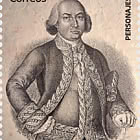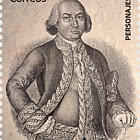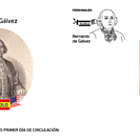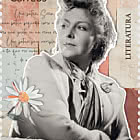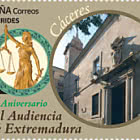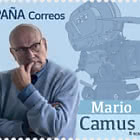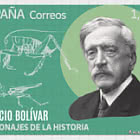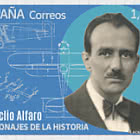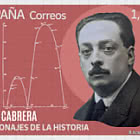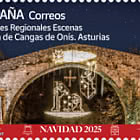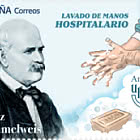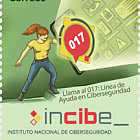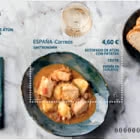Release years
Bernardo de Galvez
On July 23, 1746, Bernardo was born in the small Malaga town of Macharaviaya to Matías de Gálvez and his wife Ana Gallardo, a modest couple of noble descent who lived off farming and raising livestock.
Bernardo began his military career in 1762. He fought against the Portuguese at Almeida, against the Apaches in Chihuahua and Texas, and against Algerian pirates. In the last two actions, he received four wounds.
Promoted to colonel, he returned to America after being appointed governor of Louisiana and commander of the regiment that garrisoned it. There, he married Felícitas Saint-Maxent, with whom he had three children. The wedding took place in articulo mortis, as he was in very serious condition due to an illness that, unfortunately, he would suffer for the rest of his life and would be the cause of his death.
From New Orleans and on behalf of Spain, he contributed substantial funds to the American Revolution, and after the outbreak of the war against the English, he achieved important victories in the Mississippi Campaign. Panzacola was the last of these and the most important, as he was decisive in Washington's victory.
In 1784, he was appointed viceroy of New Spain, succeeding his father, and there he carried out exceptional work on behalf of the Mexican people. Unfortunately, as a result of his illness, he died at the age of 40 on November 30, 1786. His remains rest in the Franciscan Church of San Fernando, where his father was also buried.
In 2001, given that the illustrious figure of Bernardo de Gálvez was practically forgotten in Spain, and in fulfillment of a duty voluntarily assumed, two researchers from Málaga began a planned documentary search to try to recover his work.
To this end, the Bernardo de Gálvez Association was founded in Malaga in May 2008, currently chaired by Miguel Ángel Gálvez Toro. One of its first achievements was to disseminate the magnificent portrait painted in 1784 by Mariano Salvador Maella, preserved in Malaga and owned by the De Haya-Gálvez family.
In 2009, our research into the biography of Bernardo de Gálvez at the United States National Archives yielded an unexpected result when we learned that on May 8, 1783, the American patriot Oliver Pollock presented a portrait of Gálvez to the US Congress, where it remained hanging.
This was publicized in 2010 in the national and even international magazine Péndulo, and of course on the Gálvez Association website. But for three years, there was no reaction, until in 2013, a Spanish woman living in Washington, Teresa Valcarce, happened to learn of this unique case and, after the appropriate efforts in Washington, was able to verify that the portrait that had been hung in 1783 was no longer in Congress.
Consequently, the Association agreed to present a copy of Maella's portrait to the United States by sending it to Washington. A year later, in December 2014, after a complex process and thanks to the 4,300,000 signatures the Association managed to gather in support of the initiative, it was hung in the Capitol.
Seven days later, President Obama signed the presidential decree, previously approved unanimously by both legislative chambers, naming Bernardo de Gálvez an Honorary Citizen of the United States. Only seven other people have previously earned this singular distinction.
Sadly, this great hero died on November 30, 1786, in Mexico, barely 40 years old, while serving as Viceroy of New Spain, succeeding his father.
Despite the shortness of his term—a year and a half—Bernardo earned the enormous affection and profound admiration of the Mexican people for his demonstrated good nature and his constant and effective efforts to improve the lives of the most needy. His body was laid to rest in the church of the Apostolic College of San Fernando.
Today, Bernardo de Gálvez is a hero shared by Spain, the United States, and Mexico. In 1779, the great New Orleans poet Julien Poydrás, who witnessed his heroic actions in Louisiana and the transcendental assistance he provided to the American Revolution, wrote:
Spain - Recommended stamp issues
WOPA+ recommended stamp issues
| Music Giants VII - Iron Maiden |
| Issued: 12.01.2023 |
| ›Great Britain |
| Effigy of H.S.H Prince Albert II - Green Letter Rate |
| Issued: 03.01.2023 |
| ›Monaco |
| Year of the Rabbit |
| Issued: 05.01.2023 |
| ›Guernsey |
| Dimitrie Cantemir, 350th Anniversary of his Birth |
| Issued: 16.01.2023 |
| ›Romania |
| Medicinal Plants |
| Issued: 03.01.2023 |
| ›Romania |
| Lunar New Year - Year of the Rabbit |
| Issued: 05.01.2023 |
| ›Jersey |
| Honour Guard of the President of the Slovak Republic |
| Issued: 02.01.2023 |
| ›Slovakia |
| Veteran Tractors |
| Issued: 04.01.2023 |
| ›Aland Islands |
| St. Elizabeth’s Church in Parnu |
| Issued: 06.01.2023 |
| ›Estonia |


